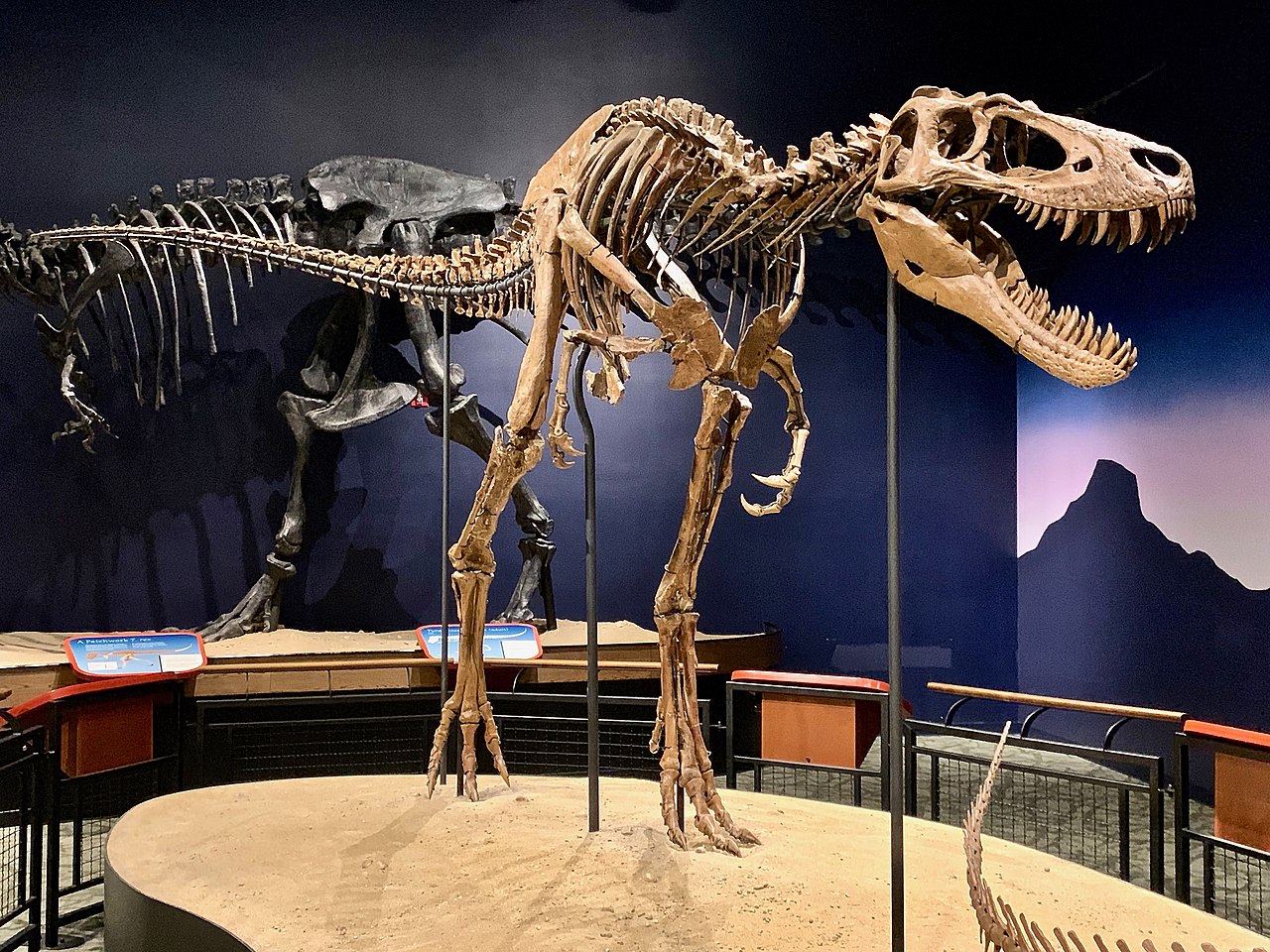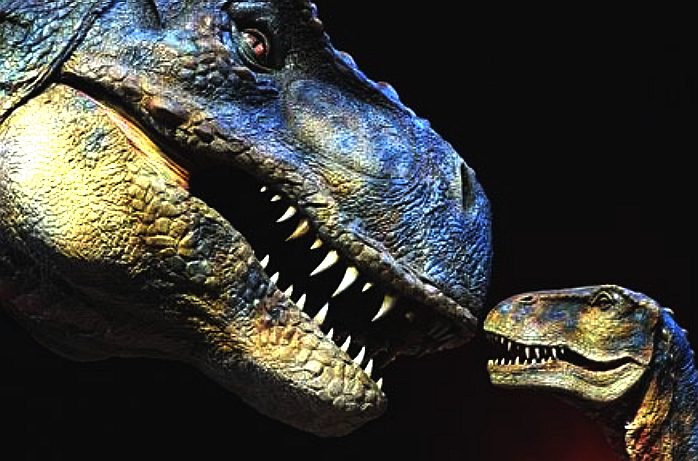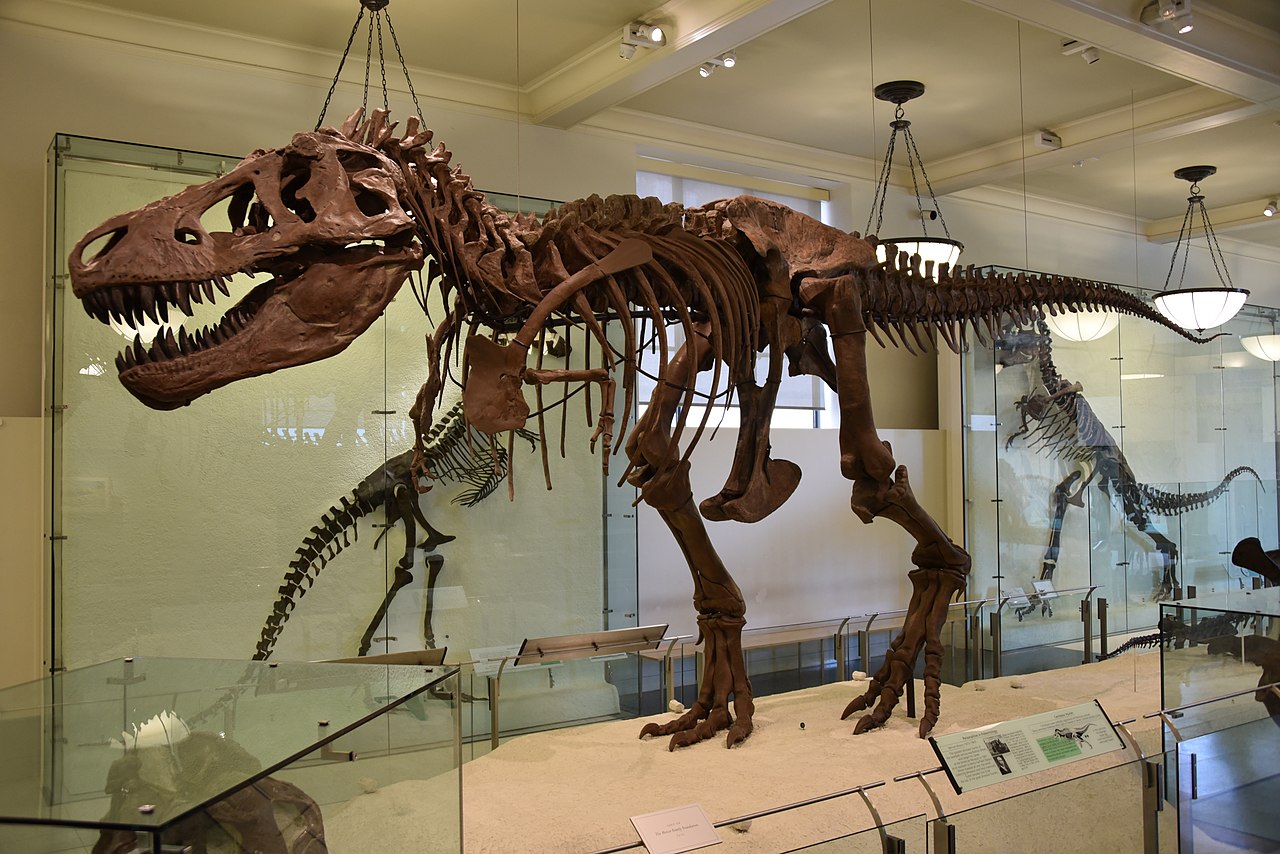
Jane
- Tyrannosaurus Rex skeleton
Tyrannosaurus is a genus of large theropod dinosaur. The species Tyrannosaurus rex (rex meaning "king" in Latin), often called T. rex or colloquially T-Rex, is one of the best represented theropods. It lived throughout what is now western North America, on what was then an island continent known as Laramidia. Tyrannosaurus had a much wider range than other tyrannosaurids. Fossils are found in a variety of rock formations dating to the Maastrichtian age of the Upper Cretaceous period, 68 to 66 million years ago. It was the last known member of the tyrannosaurids and among the last non-avian dinosaurs to exist before the Cretaceous–Paleogene extinction event.
T. rex was one of the largest land carnivores of all time. One of the largest and the most complete specimens, nicknamed Sue (FMNH PR2081), is located at the Field Museum of Natural History in Chicago. Sue measured 12.3–12.4 m (40.4–40.7 ft) long, was 3.66–3.96 meters (12–13 ft) tall at the hips, and according to the most recent studies, using a variety of techniques, maximum body masses have been estimated approximately 8.4 metric tons (9.3 short tons). A specimen nicknamed Scotty (RSM P2523.8), located at the Royal Saskatchewan Museum, is reported to measure 13 m (43 ft) in length. Using a mass estimation technique that extrapolates from the circumference of the femur, Scotty was estimated as the largest known specimen at 8.87 metric tons (9.78 short tons) in body mass.
Not every adult Tyrannosaurus specimen recovered is as big. Historically average adult mass estimates have varied widely over the years, from as low as 4.5 metric tons (5.0 short tons), to more than 7.2 metric tons (7.9 short tons), with most modern estimates ranging between 5.4 metric tons (6.0 short tons) and 8.0 metric tons (8.8 short tons).

Most paleontologists accept that Tyrannosaurus was both an active predator and a scavenger like most large carnivores. By far the largest carnivore in its environment, T. rex was most likely an apex predator, preying upon hadrosaurs, armored herbivores like ceratopsians and ankylosaurs, and possibly sauropods. A study in 2012 by Karl Bates and Peter Falkingham found that Tyrannosaurus had the most powerful bite of any terrestrial animal that has ever lived, finding an adult Tyrannosaurus could have exerted 35,000 to 57,000 N (7,868 to 12,814 lbf) of force in the back teeth. Even higher estimates were made by Mason B. Meers in 2003. This allowed it to crush bones during repetitive biting and fully consume the carcasses of large dinosaurs. Stephan Lautenschlager and colleagues calculated that Tyrannosaurus was capable of a maximum jaw gape of around 80 degrees, a necessary adaptation for a wide range of jaw angles to power the creature's strong bite.
Since it was first described in 1905, T. rex has become the most widely recognized dinosaur species in popular culture. It is the only dinosaur that is commonly known to the general public by its full scientific name (binomial name) and the scientific abbreviation T. rex has also come into wide usage. Robert T. Bakker notes this in The Dinosaur Heresies and explains that, "a name like 'T. rex' is just irresistible to the tongue."

T.
Rex - America Museum of Natural History
ALLOSAURUS
ANKYLOSAURUS
ARCHAEOPTERYX
BARYONYX
BRACHIOSAURUS
BRONTOSAURUS
CAMARASAURUS
CARNOTAURUS
CERATOSAURUS
COELOPHYSIS
DIPLODOCUS
GALLIMIMUS
IGUANODON
MEGALOSAURUS
MOSASAURUS - MEUSE LIZARD
OVIRAPTOR
PARASAUROLOPHUS
PLESIOSAURUS
PTERANODON
PTERODACTYL
RAPTOREX
SPINOSAURUS
STEGOSAURUS
STYRACOSAURUS
TRICERATOPS
TYRANNOSAURUS
REX
VELOCIRAPTOR

A
Sectasaur™ model, full size.

CHAPTERS
|
CHARACTERS
|
DINOSAURS
|
MOVIES
|
PLOT
OUTLINE




